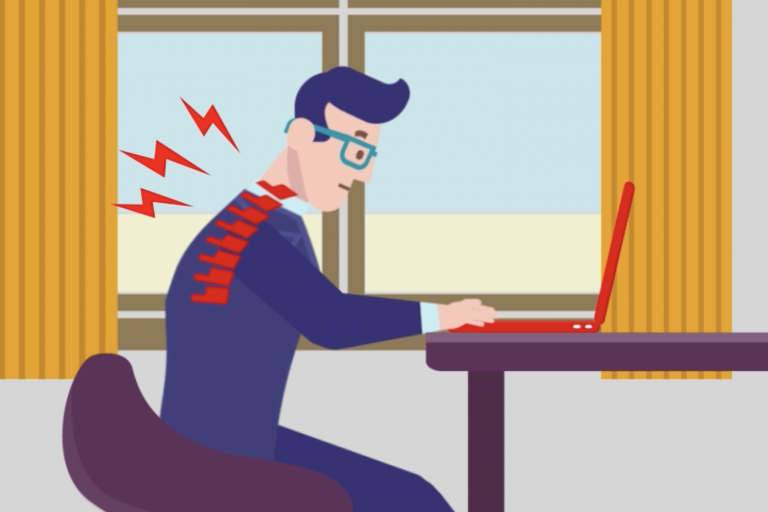Clare Corkish, Human Resources Director, Vodafone UK, shares some top tips on how we can work from home safely and effectively during lockdown.
The health crisis and consequent lockdown have changed the way we operate as a business and how many of us do our jobs. Working from home has become the new normal.
In March, Vodafone UK went from a predominately office-based workforce to one that was almost entirely working from home – practically overnight. We’ve all had to navigate many adjustments to our working and home lives as a result.
Technology and connectivity have helped, of course, but there have been many challenges, mental and physical. So I wanted to share what we’ve learned at Vodafone with the world outside.
Here are our top tips.
Set boundaries
Working from home can blur the boundaries between our professional and personal lives – we can find ourselves working longer hours, answering emails late at night, and not giving enough time to our families, friends – or ourselves.
So it’s important to set ‘office’ hours – and stick to them, and build in regular breaks, including for lunch, and time for exercise.

Literally closing and packing away your work laptop and phone at the end of the day can be surprisingly effective, especially if your home isn’t large enough to accommodate a dedicated home office that you can close the door on.
Apply structure
Structure your working day and develop a routine – setting aside blocks of time for meetings, say, and for replying to non-urgent emails. This leaves you free to tackle the rest of your day with as few interruptions as possible. It’s also more likely to give you the time and energy to think creatively.
Create a safe workspace
At Vodafone we’ve been providing our colleagues with various kit – adjustable chairs, laptop stands and so on – so that they can work from home in ergonomic safety. But you don’t always need fancy new equipment. Avoid back and eye strain by working on a flat, stable surface.
Work safely
Make sure the top of your laptop’s screen is directly in your line of sight when you are sitting upright looking straight ahead. If it isn’t, use a laptop stand or a stack of books to raise it up.
Avoid repetitive strain injury from typing and clicking by using an external keyboard and mouse if you can.

Credits: Vodafone Business
Ensure your wrists are at the right height for typing and that your back is properly supported – this is where a chair with adjustable height and lower back support is useful. If you don’t have this type of chair, use cushions or pillows to raise your height and support your lower back.
Take regular breaks! Stretching and standing can help prevent muscle pains. Breaks can be beneficial for physical and mental wellbeing. Going outside at lunchtime, for example, can help you clear your mind, de-stress and refocus your concentration.
Managing meetings
At Vodafone, we’ve listened to what our colleagues have told us and issued new guidelines about virtual meetings. In short, there are too many of them and they go on too long!

So we’re recommending reducing their frequency and length – shortening one-hour meetings to 45 minutes, for example, and half-hour meetings to 20 minutes. And if you think there’s little benefit to you being on a particular call, politely decline it.
This discipline on meeting effectiveness prevents endless screen time and ensures interactions count as time well spent.
Maintaining team spirit
Maintaining team spirit and morale is harder when team members are geographically dispersed and unable to meet in person. Physically distant yet socially connected is a helpful mantra. Make the most of instant messaging (IM), email, video chat and phone calls to help maintain team effectiveness and cohesion.
And if you haven’t heard from a colleague for a while, get in touch. Working from home can be a lonely and isolating experience for some.
An open video chat room can replicate that water cooler experience, providing people with somewhere they can dip in and out of. Where possible, line managers should have set ‘open door’ hours when anyone can privately IM, call or video chat them to discuss any concerns.
Find out which method of communication your team members prefer to use.
Video-calling tips
Ideally, your light source should be in front of your face rather than behind you, otherwise you might just appear silhouette to everyone else on the call.
Dress for your audience. T-shirts and tracksuit bottoms may be acceptable for your team-mates, but you may want to dress to impress when pitching for new business or briefing your boss.

Credits: Shutterstock
Before sharing the contents of your screen with your video chat audience, ensure there’s nothing visible that could be commercially sensitive or personally embarrassing. Mute notifications and/or switch on your computer’s ‘do not disturb’ mode to avoid interruptions from emails, IMs and requests for other video calls.
If possible, have a neutral background behind you to avoid distracting your audience.
And when you’re not speaking, mute yourself. No-one wants to hear your coughs, sniffles and heavy breathing during a conversation!
Where possible, limit interruptions from other members of your household (although everyone does love the occasional cameo appearance from pets and kids in video chats.)
To make the most of everyone’s time, prepare talking points or an agenda – and stick to it.
- Follow @VodafoneUKNews on Twitter.




![Nicki-Lead_image[OPTIMISED]](https://www.vodafone.co.uk/newscentre/app/uploads/2023/10/Nicki-Lead_imageOPTIMISED.jpg)
![Coins of Great British sterling[Adobe Stock]](https://www.vodafone.co.uk/newscentre/app/uploads/2024/06/Coins-of-Great-British-sterlingAdobe-Stock.jpg)

